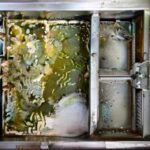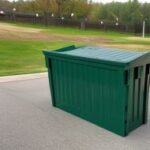Three Signs that You Need HVAC Vent Cleaning

HVAC systems deal with dust, dirt and grime every day. The issue is that property owners often don’t see the good work that these systems do. Since so much of what an HVAC system does is literally behind the scenes, it is often forgotten that regular maintenance and cleanings is required, just like everything else in the home. For heating and ventilation systems, that means regular HVAC vent cleaning.
Here is an overview of vent cleaning, including what it is, why it is important, and the top reasons to use a professional for the service.
What is HVAC Vent Cleaning?
All day, every day the HVAC system pushes air throughout the space. As it does, it picks up dust, dirt, and other particulates in the air. It usually pushes these contaminants through filters and eventually outside, where they can be harmlessly released. Considering an average vent can move up to six pounds of dust every year, there is a lot of movement and eventually the debris will start to accumulate in the vents. When this happens, it is time for an HVAC vent cleaning.
HVAC vent cleaning is a service provided by experienced and trained professionals who have the equipment needed to clear out any accumulated particulates in HVAC systems and vents. The procedure is fast and inexpensive. It comes with a complimentary inspection of the HVAC system to see if it needs any other maintenance and repairs.
In general, HVAC vent cleaning starts with using a tool similar to a plumbing snake in the vents. This gathers all of the dust in the vents and pushes it through the filters. Then, a vacuum is used to suck all the air through the system and remove every bit of dust and grime, leaving the HVAC system clean and ready to keep filtering and moving air.
Why is HVAC Cleaning Important?
There are two major reasons why regular HVAC vent cleaning is important: efficiency and fire hazards. As the system accumulates dust, it requires more energy to push the air through the space. This is especially true if the filters are old and in need of replacing. The more energy required to push air around, the more your system costs to run every month. A vent cleaning can be the first step in lowering monthly utility bills by helping it run more efficiently.
Unfortunately, the dust and particulates in the HVAC system can also be extremely flammable. Fires due to dryer vents in particular cost people millions of dollars in damages every year and entire homes are lost to these fires regularly. HVAC vent cleaning helps to clear out these flammable materials so that the system has a lower chance of potentially having a fire.
Signs that You Need Professional Vent Cleaning
The first sign is higher than normal monthly bills. Inflation has been increasing month-to-month expenses but a gradual increase in utility bills on top of inflation may indicate that HVAC vent cleaning is required. This cleaning will help to clear out anything making the system run less efficiently. The result is lower monthly utility bills immediately after a cleaning.
The second sign that an HVAC system needs cleaning is dust showing up everywhere, especially on furniture and appliances. If a space has been regularly cleaned yet it seems to be having no effect, then the HVAC system might be pushing dust through the vents and into the home. By clearing out the dust trapped in the vents, then dusting can start to really have an impact on the cleanliness of the home.
The third sign is if anyone is experiencing health issues related to breathing in dust, pollen and debris. This could include coughing, allergies and other problems. If someone who lives in the home is experiencing these sorts of health issues, an HVAC vent cleaning could help.
How to Get a Professional HVAC Vent Cleaning
HVAC systems need regular care and maintenance. That starts with an HVAC vent cleaning done by a professional. Be sure to always use experienced professionals for this work as it requires specialized tools and expertise to be done correctly. Plus, HVAC experts can inspect the system to see if it needs any other maintenance or repairs.







